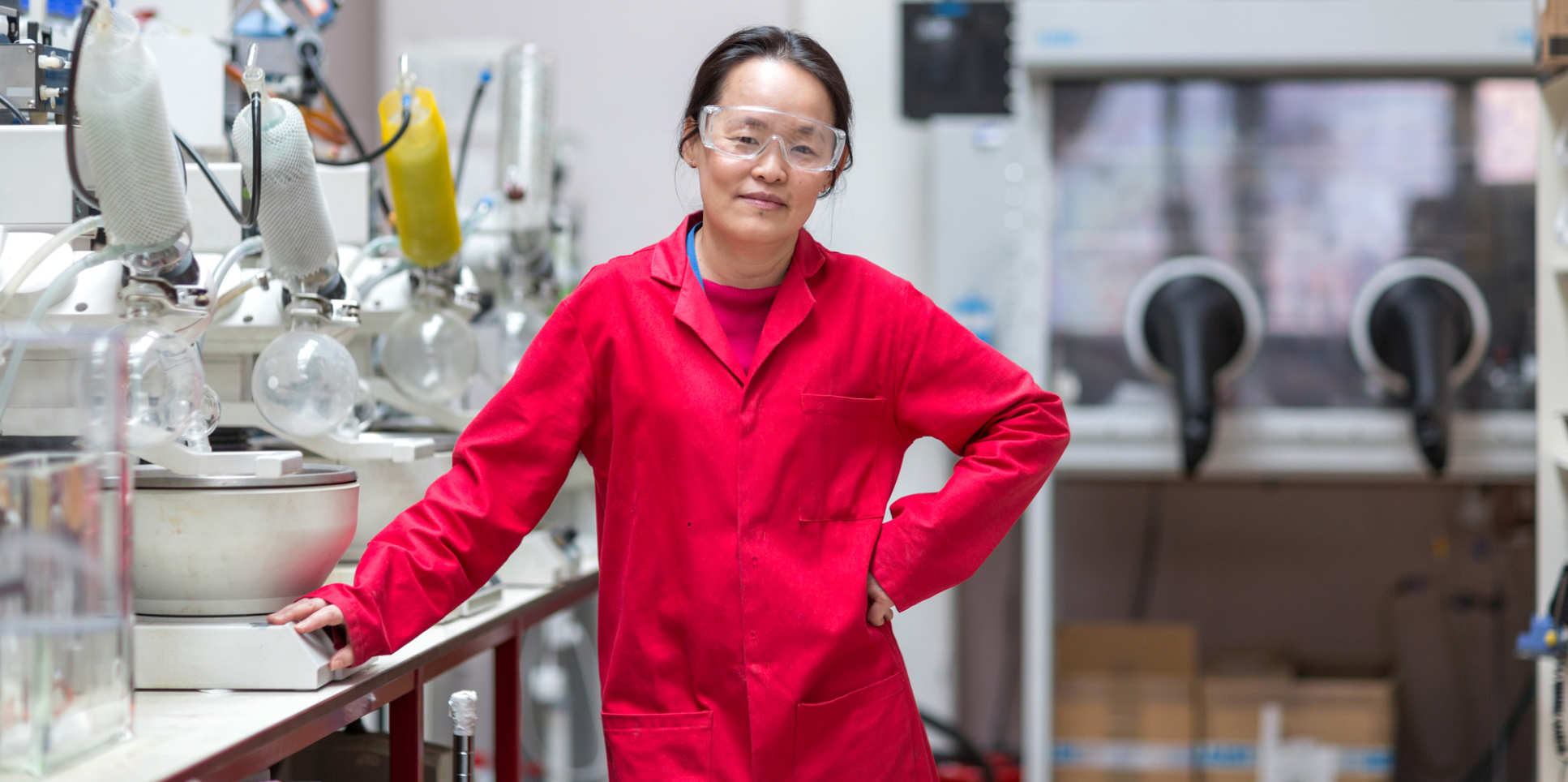Five minutes with Professor Mimi Hii, Professor of Catalysis

1. Tell us about your research in a nutshell
My personal interest is in the field of Catalysis. 90% of current industrial processes use a catalyst – I mean, every time you touch an enzyme that’s catalysis! I focus on making reactions more efficient in terms of time and energy. At the moment however I’m preoccupied leading the set-up of the Centre for the Rapid Online Analysis of Reactions (ROAR) facility.
2. What is the ROAR facility?The ROAR facility is a new £4.7M centre to be housed in the new White City Molecular Sciences Research Hub, with £2.7M of investment from the EPSRC, which will be dedicated to data-driven synthetic chemistry.
At the moment there’s a lot of trial and error and observation, which is making chemistry too much like cooking for our liking."
The facility will house state-of-the-art automated synthesis and analytical instruments that are not available in concert outside of certain industrial laboratories. The whole vision is to make this equipment available to Researchers who cannot afford them. This will help them to generate a large quantity of reliable data, so that it will help to make synthesis more predictive, i.e. you will be able to know whether your experiment is likely to work (or not) before you even step into the lab.
To take a step back, chemistry is still suffering from a lot of manual manipulation in lab experiments, which is contributing to a serious reproducibility problem (though the problem is not exclusive to chemistry). However, because we can’t reproduce our results, we don’t know what data’s reliable and because we don’t have reliable data we have no chance of developing any kind of artificial intelligence to scrutinise the results. At the moment there’s a lot of trial and error and observation, which is making chemistry too much like cooking for our liking.
To gather better data and make better use of it you need really quite sophisticated machines. So my colleagues and I at the Dial-A-Molecule Grand Challenge Network started dreaming of a centralised, flagship facility for all synthetic chemists in the UK, kitted out with machines that will carry out reactions on the chemist’s behalf. This is what ROAR is. It’s a place where people can come, have access to equipment, be trained on that equipment, and collaborate with each other.
Of course this is a huge, multi-disciplinary project that relies on engineers to build the machines we need, data scientists to help us pick through the data and a strong, symbiotic relationship with industrial partners.
We will work with technology providers, for example, to develop instruments jointly. As scientists we will always be wanting to push the boundaries of discovery and will need new technology built to keep up. This is when the project becomes scalable, commercial and translatable to other Universities and Institutes across the world.
3. To bring you back to your personal research, what else are you working on?
I particularly enjoy working at the physical science-engineering interface to solve everyday problems. For example, one of my current projects is working on developing the next generation of self-cleaning toilets."
I design reactions too and I have a list of impossible reactions that I’m working my way through trying to solve. These are reactions that are very, very ’green’, yet currently there are no known synthetic routes that can do many of these reactions.
I particularly enjoy working at the physical science-engineering interface to solve everyday problems. For example, one of my current projects is working on developing the next generation of self-cleaning toilets. I started thinking about bleach and how it’s made. You pass an electric current through salt water and you get bleach. Maybe we can install an ‘electrochemical’ unit in your cistern, add some salt water and every time you flush you will get enough bleach to keep your toilet clean. We actually looked in to this and the resultant technology kept the toilet cleaner than an average kitchen sink!
We are currently licensing the technology to industry but it has potential applications in disaster zones too. The initial aftermath of a natural disaster is terrible and kills so many people, but the real killer is dysentery, due to services being disrupted or unclean water. If humanitarian teams only needed a packet of salt and a solar-powered electrical current they could have bleach on demand and dramatically cut the number of secondary deaths.
I have an interest in keeping technology local and waste free.
4. Who/what sectors would be interested in hearing more about your research?
- Companies looking for new technologies to improve their workflow/productivity
- Technology providers
- Chemists who want to keep up-to-date with the latest equipment
- People who are interested in developing AI (for physical science)
Learn more about Professor Hii's research group, the ROAR facility, and the Molecular Sciences Research Hub at White City